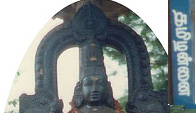
 |
||
| Home Culture Lessons > I 1 2 3 4 5 6 II 1 2 3 4 5 6 III 1 2 3 4 5 6 IV 1 2 3 4 5 6 V 1 2 3 4 5 6 VI 1 2 3 4 5 6 Select Unit | ||
|
| ||
Spoken, Written and Tamil dialectsThe concepts of purity and pollution are very much applicable to Tamil language use. Traditionally, Tamils tend to think that what is written and read are the pure forms of the language and that here shouldn't be any mixture of spoken Tamil in such written forms. The literary variety of the language is considered to have preserved the beauty and purity of the language because is has conserved older forms by resisting phonological changes (vs. the spoken language). For instance, the sentence மழை பெய்தது 'it rained' is considered pure and மழெ பேஞ்சிது impure, even if the spoken version is regularly used by such speakers. Here, then, one form of the language (written) is attributed properties different from another form of the language (spoken), e.g., purity, refinement of speaker, appropriateness with respect to the context, eloquence, etc.Similarly, the portrayal of Tamil dialects and accents, either by speakers to each other or in mass media, also determine the stigmatization process of certain language forms. It is a common practice among the users of various regional and social dialects to criticize and make fun of each other's use of the language in terms of words, phrases and sentences. Dialects of the language not only vary at the word level, but also vary considerably by intonation/accent. Both words as well as accent are heavily criticized among the speakers of various dialects. Consider the following dialect differences for the conjugation of the verb போ in the present progressive: போய்க்கொண்டிருக்கிறேன் 'I have been going' (standard literary) போய்க்கிட்டிருக்கேன் (Thanjavur dialect, presumably the standard spoken Tamil) பொயின்ட்ருக்கேன் (Brahmin dialect) போயினிருக்கேன் (Madras dialect) Obviously, these forms occur as a result of application of phonological rules in multiple ways. What matters in this context is that each of these forms is stigmatized to the people who speak it, and hence attained special social attributes. For most all speakers, however, it is only the standard literary form that is considered to preserve the beauty of the language and is the form which should be used in media and platform speech. In order to avoid being critiqued by others, most marginalized dialect speakers use the standard form while participating in conversations with speakers of other dialects. The claim that the Thanjavur dialect has evolved as a standard spoken variety of the language and that it is less stigmatized and used in media is often criticized by the speakers of other dialects, mainly for the reasons of jealousy. H4>Lexical differences The major change that one finds in dialects is difference in vocabulary. Vocabularies can have different forms as a result of phonological changes or as different uses of words. அங்கே 'there' (standard literary form) அங்கனெ (Thirunelveli dialect) அங்க (Thanjavur dialect) அங்குட்டு (Madurai dialect) அங்காலெ (North-Arcot dialect)
பாட்டி 'grand mother' ஆத்தா (Harijan dialect) ஆயி (Vellala dialect) அம்மம்மா (Tiruchi dialect) ஆச்சி (Some parts of Vellala dialect) Development of new grammatical categories in DialectsSome dialects have also developed new grammatical forms during the course of their language change. For example, the Madurai dialect developed a 'third person plural impolite form', which is not common in other dialects. Usually, the plural form is used to express politeness. So, there evolved a gap in the language for not being able to address the mass in an impolite manner. Madurai dialect removed this gap by creating a new form of ஞ combining the impolite nasal sound ன் and the polite plural form ங்க. வருகிறார்கள் போகிறார்கள் ஒன்றும் சொல்ல மாட்டேன் என்கிறார்கள் 'they come and go, but don't say a word' (Standard literary variety) வறாங்க போறாங்க ஒண்ணும் சொல்ல மாட்டேங்க்றாங்க (Standard spoken form) வறாஞ போறாஞ ஒண்ணும் சொல்ல மாட்டேங்க்றாஞ (Madurai dialect using ஞ as plural impolite marker.) வறாஹ போறாஹ ஒண்ணும் சொல்ல மாட்டேங்க்றாவுஹ (Thirunelveli dialect) Overlapping of lexical items between dialectal and standard formsThere are also certain homonyms created by certain changes in literary Tamil and certain spoken dialectal forms that have emerged over the course of time. For example, the oblique form of the word for 'house' in the Brahmin dialect is ஆத்த்- as in ஆத்துலெ 'at home', ஆத்துக்கு 'to the house' etc. It is derived from the literary Tamil word அகம் meaning 'house' or 'inside' (அகத்தில் 'in the house' leads to deletion of க followed by the compensatory lenghtening of the vowel அ). As a result of this particular development in this dialect, these words overlap with the the spoken form of the word ஆற்றில் 'in the river', which is ஆத்துலெ; also ஆத்துக்கு 'to the river'. |
|
© South Asia Language Resource Center (SALRC) |